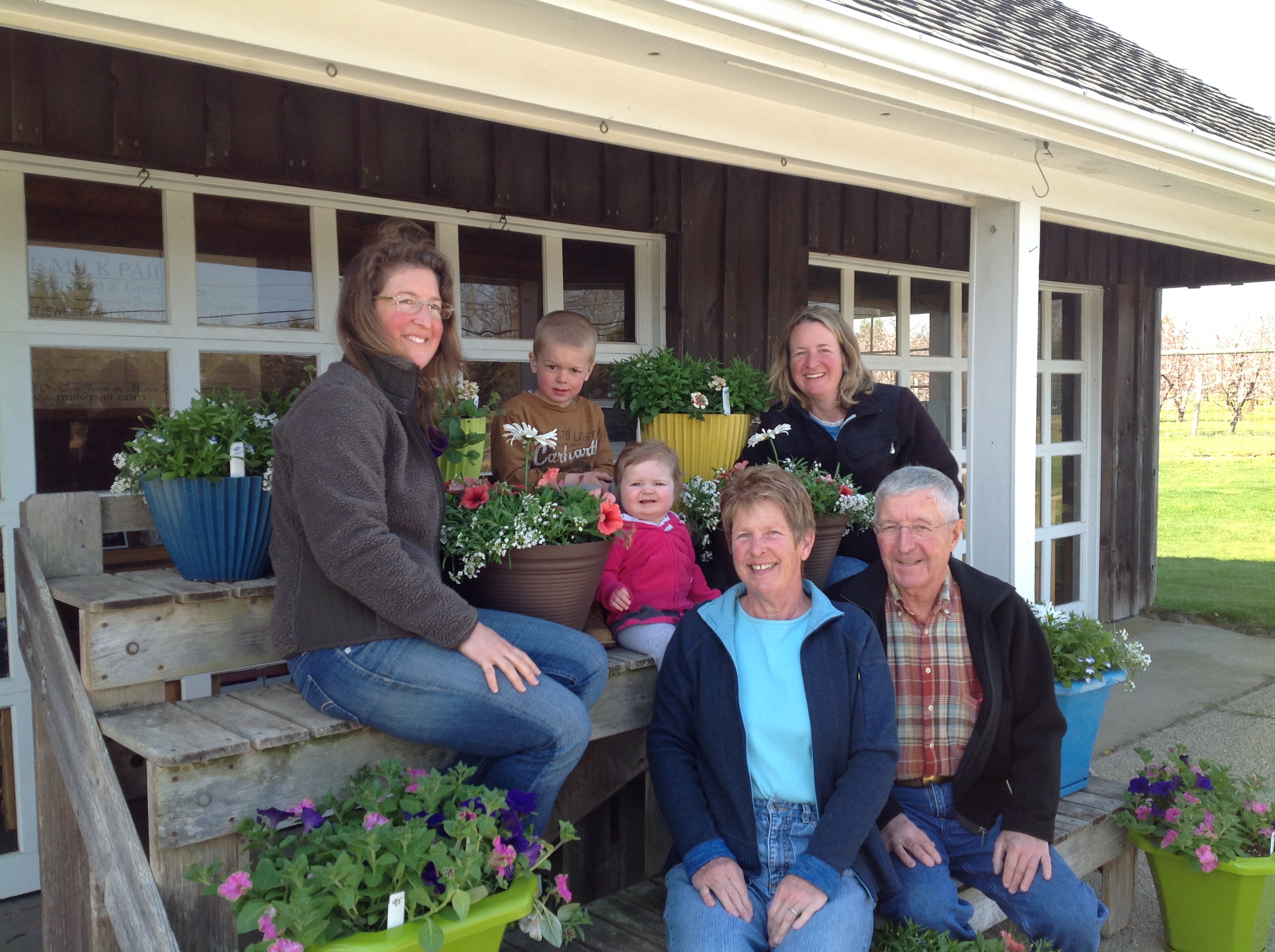The Halseys: Still Farming on the South Fork

Since the first generation of Halsey farmers (they’re on their 13th generation now), farming in the Hamptons has changed a lot—and yet, it hasn’t changed that much.
There are more summer houses and fewer farms, and the farmers that have remained, toiling on the land among swimming pools and tennis courts are an inventive lot who live off their farm—like John and Evelyn Halsey, and their daughters Amy Halsey-Cohn and Jennifer Halsey Dupree, in Water Mill. What they’ve created have become Hampton institutions.
Who doesn’t know The Milk Pail, that busy country farm store on Montauk Highway, offering apples, apple cider, pumpkins and peaches? And donuts? Oh, the donuts! But I digress. FYI: The Milk Pail used to close mid-May until the fall, but now it is open on weekends, all summer!
Back in the day, circa 1994, Evelyn was in charge of The Milk Pail, but now Amy manages it, as well as the Greenhouse, which grows Amy’s Flowers, another Hampton institution. Jennifer has taken over the growing process at the farm from John.
Things really began to change when the daughters came back from college, over 15 years ago, Jenn from Cornell University’s College of Agriculture and Life Sciences, and Amy from SUNY Cobleskill.
“Each girl, when they graduated, came back and started something new,” says Evelyn.
“Amy took a little bit, and I took a little bit,” says Jenn. “I think one of the biggest differences today is that we’re bigger. What Dad was taking care of was a bit smaller. The U-Pick was just starting to grow, and when we put it on the web, it just took off.”
From the daughters’ point of view, the hardest thing about John and Evelyn passing the torch to them was: “Relinquishing control,” says Jenn. “Dad definitely has his ways of doing things. But it just makes sense. If you’ve done it for 50 years and you know an easier way to do it, of course you are going to say, ‘Hey, why don’t you do it this way?’”
“You don’t change agriculture significantly from one generation to the next,” says John. “Having said that, now we have Amy’s greenhouse. I never had a greenhouse, and I don’t know anything about doing it, but Amy does.”
“Here’s a similarity to the past,” says Amy, “the brown side goes down and the green side goes up!” That means the roots go in the ground and the plant grows out of the top. That hasn’t changed.
“One difference is that Jenn brought in a new treatment for apple cider,” says Evelyn.
Jenn explains: “At the end of the process, instead of pasteurizing the cider, which heats it and kills the flavor, we now treat the cider with ultraviolet light, which preserves the real apple cider flavor and kills as much, if not more, bacteria as pasteurization.”
Another change is in tillage—which is the preparation of the soil by digging, stirring and overturning. “One of the biggest differences in how we do things now is with the pumpkins and the tillage,” says Jenn. “Before, you would take a plow and flip the dirt all the way over. We’re trying to reduce that because now we’re finding that it actually injures the soil. By reducing the amount of tillage going through, it keeps your soil healthier.
“We’re also trying to incorporate cover crops and legumes. Cover crops put nutrients back into the soil. We’re using vetch and peas.”
John adds: “There’s nothing scientific about the way our ancestors handled the ground before there was equipment strong enough to plow. A shovel and a hoe and a garden are all they had. We’re doing the same, except that now we’re doing it on a much larger scale. We have the equipment that will handle this type of reduced tillage. Also there’s a lot more known about the crops that are being grown.”
John farmed potatoes with his father, Everett Lawrence Halsey, before he went into dairy farming and eventually apple and pumpkin farming.
“I think the biggest similarity today to what has gone on throughout our history,” says John, “is that we want to continue as always, farming here in the Hamptons and living in harmony with tourists and locals alike. I think the biggest change is that the farm is now run by women, Amy and Jenn, and I’m happy about that. It’s their farm.”



